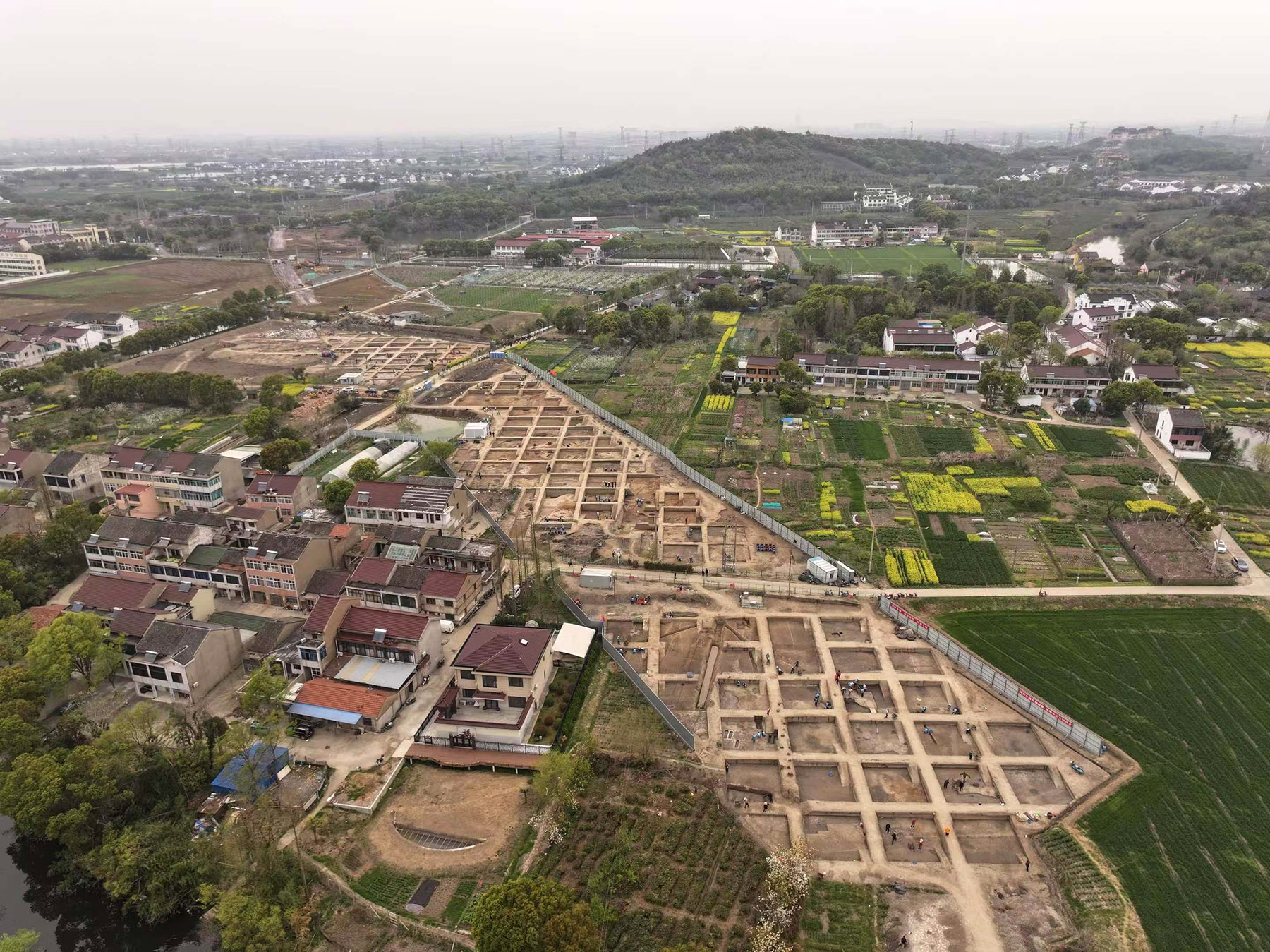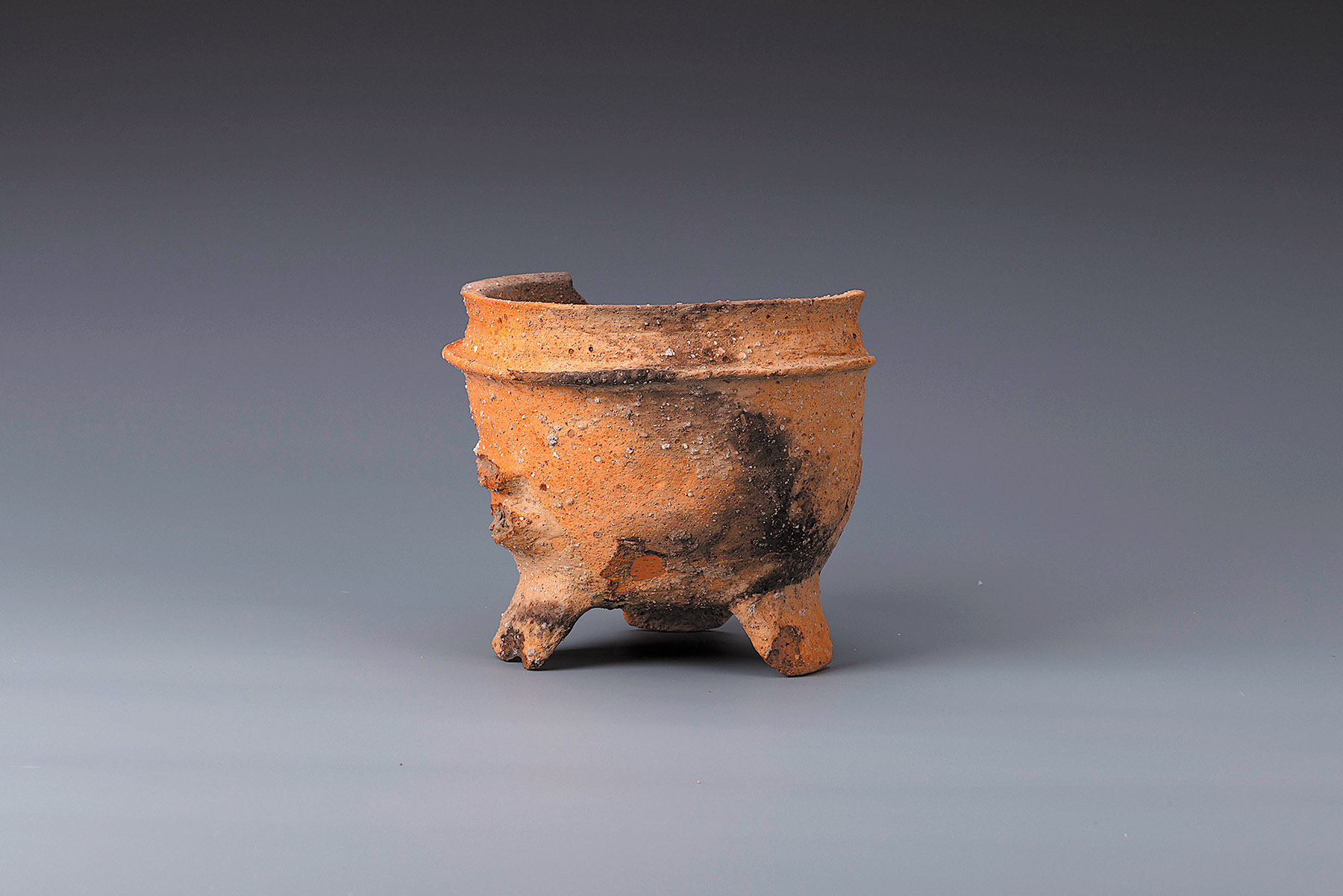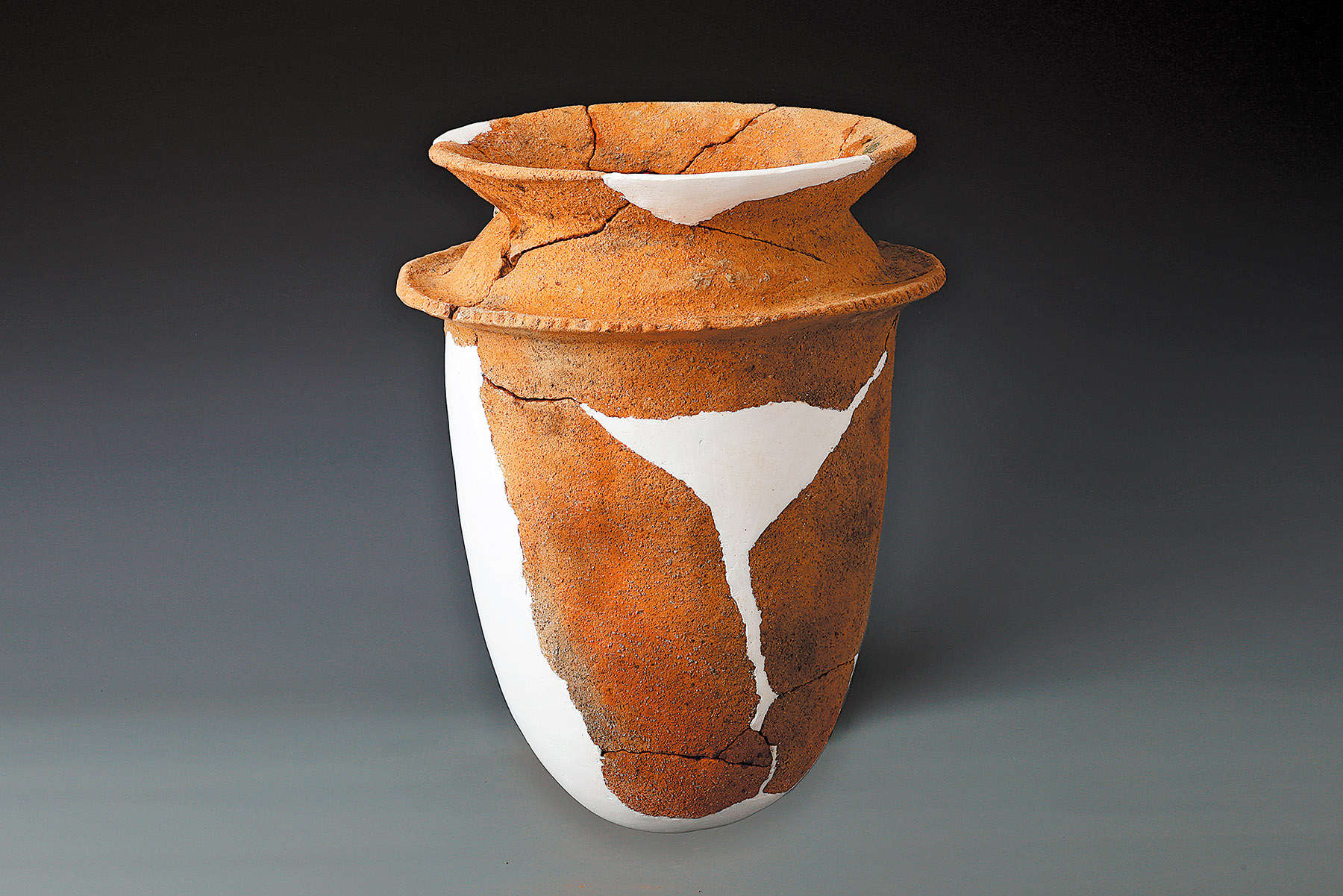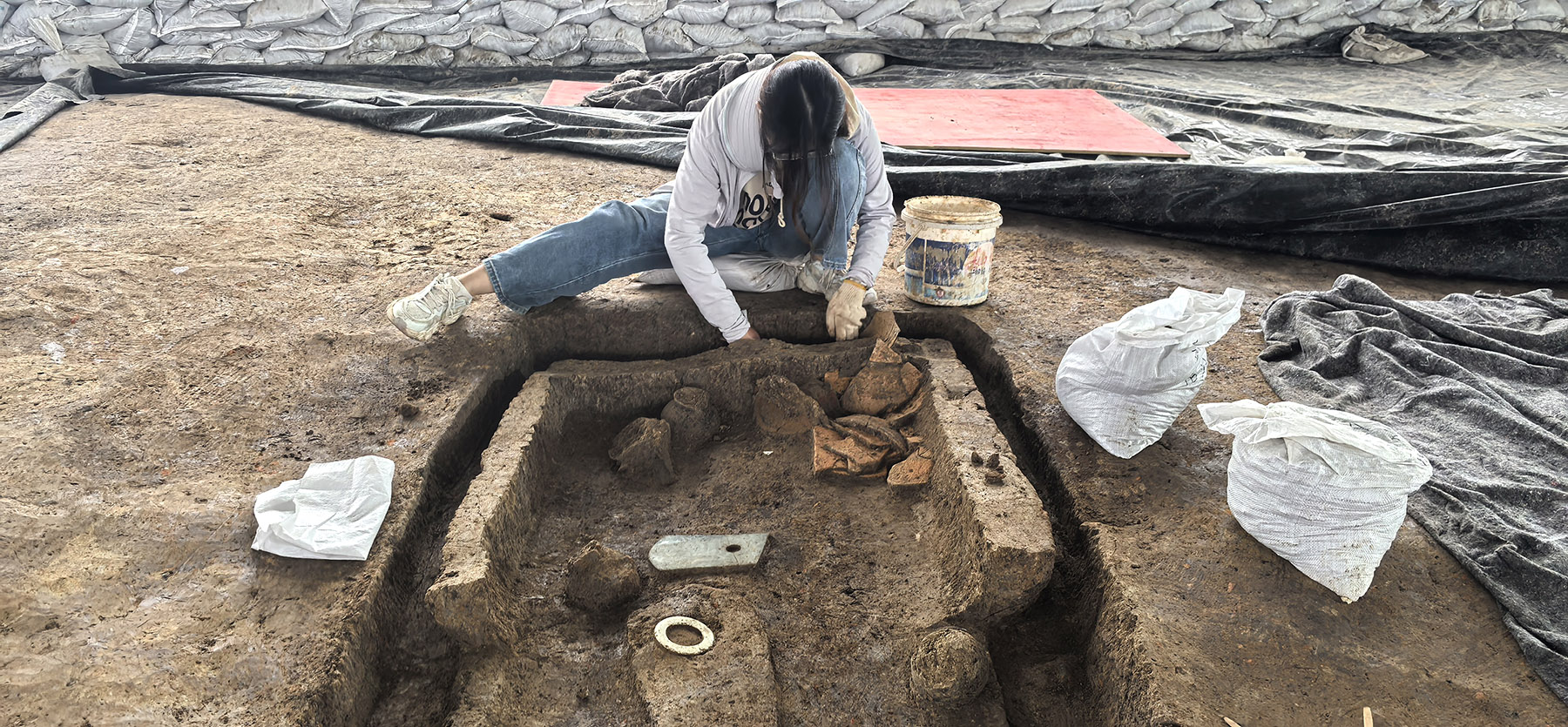Vast archaeological site unearths new research materials for comprehending the formation of urban society approximately 6,000 years ago, Wang Qian reports.

On a gentle slope in Doushan village, Wuxi, Jiangsu province, the contours of the past emerge from the earth. Archaeologists brush away soil from a groundbreaking discovery of the remains of a prehistoric city dating back approximately 6,000 years.
Spanning nearly 250,000 square meters, the Doushan site has been identified as the earliest known prehistoric city in the lower Yangtze River Delta. Its sophisticated network of walls and moats, dating to the Majiabang (5000-3350 BC) and Songze (3800-3300 BC) cultures, helps researchers understand how urban societies began forming in the region.
For the archaeologists on the ground, it is a moment of profound revelation.
READ MORE: A Neolithic site in Jiangsu tells new stories
"Dense with relics and rich in content, the site possesses significant historical, scientific, and artistic value. Its discovery provides new material for comprehending the social structure, the levels of productivity of the Majiabang and Songze cultures, and for studying the process of civilization in the lower Yangtze River region," says Zhou Runken, the leader of the excavation team and deputy director of the Jiangsu Provincial Institute of Cultural Relics and Archaeology.

The team has excavated about 16,000 sq m, uncovering compelling evidence of a dual-layer defensive structure. Preliminary work has revealed an inner wall and moat, forming a neat, rounded-square enclosure covering nearly 75,000 sq m. Evidence points to a larger outer wall and a complex of three moats, suggesting the outer city spans 125,000 sq m. Carbon dating of artifacts from the moats confirms their construction to be around 6,000 years ago.
"The scale and complexity of the fortifications suggest a highly organized society with significant communal planning and labor coordination," Zhou says.
"The inner wall and moat are closed and intact, indicating a clear boundary for the core urban area, "Zhou says, adding the construction is sophisticated, with the walls built in multiple layers and supported by revetments.
According to Zhou, 194 tombs from the Majiabang and Songze cultural periods, 13 houses, and 12 burnt earth accumulations have been excavated. Nearly 1,800 artifacts, including pottery, stoneware, jade, porcelain, and bronze ware, have been unearthed.
With most of the ceramic pieces made from reddish sandy clay, items such as bowls, tripods and cooking pots point to a community with established domestic habits and cultural customs.
Necessitated by the construction of a new expressway, which started survey in 2023, the excavation is the result of the county's policy, which mandates archaeological surveys before beginning any major construction projects.

Since July 2024, a joint archaeological team with members from provincial and national institutions, including the Jiangsu Provincial Institute and the Chinese Academy of Social Sciences, has carried out a large-scale excavation.
Long before the first excavation began, archaeologists were presented with a challenge: how to understand the vast site without causing damage?
The team employed advanced technology to see what the naked eye could not. As a novel application, they used a phase-controlled acoustic wave method — essentially giving the ground a sonogram — to map subsurface structures over the area without damaging it. The resulting data guided shovels to high-probability targets, leading to the efficient discovery of the walls and moats.
"This acoustic, non-destructive exploration technology allows us to understand the accumulation of cultural layers and the information of important remains on the premise of causing no damage, "says Li Yongjun, head of the archaeology department at the Wuxi Cultural Relics and Archaeology Institute.
Over nearly a month, engineers surveyed more than 100,000 sq m, laying down 118 survey lines and gathering terabytes of data. The results produced a colorful map of the underground: red markers indicated high-frequency anomalies, hinting at the potential locations of houses and rammed-earth platforms, while blue markers suggested lower-density areas, possibly ancient rivers or ponds.
Subsequent reverse verification by archaeologists, digging at the indicated points, confirmed the technology's accuracy, uncovering burnt red clay and ash pits exactly where the scans predicted.
While technology sets the stage, the real story is told by the soil. One of the most significant findings was a sophisticated system of two walls and three moats from the Majiabang cultural period.

Beyond the fortifications, another discovery underscores the site's longevity and significance — a dense cemetery from the subsequent Songze culture, with more than 140 tombs. Many are high-status burials, with some containing more than 20 grave goods, including ritual jade axes and finely crafted pottery.
"The Majiabang-period prehistoric city was clearly carefully planned and designed," says Ge Xinwei, who is part of the excavation team, at a panel discussion about the site's importance last month.
His team traced the clues from the initial walls and moats by setting up multiple test trenches around the site. They found that the inner wall and its accompanying moat formed a complete, rounded-square enclosure. The inner wall was constructed in four to six layers, with some sections supported by revetments. The base of the wall is generally between 4 and 9 meters wide, and stands up to 1.3 meters high in its best-preserved sections. The outer wall, also substantially built, has been identified mainly in the northern part of the site.
ALSO READ: Application of AI bolsters culture and museum sectors
The discovery at Doushan offers profound insights into the Majiabang culture, which has long been considered the source of the Jiangnan culture that originated in the southern areas of the lower reaches of the Yangtze River, mainly in Zhejiang and Jiangsu provinces, and Shanghai.
The scale and complexity of the fortifications suggest a level of social organization and communal effort not previously attributed to this period. It offers crucial new evidence for the country's national project to trace the origins of Chinese civilization.
"For us to reevaluate and understand the productivity level and social development of the Majiabang period, this is very good evidence," Zhou says.
The work is far from over. As archaeologists continue their work, they aim to determine the full layout of the outer wall and the exact timeline of the city's rise and fall.
Cang Wei contributed to this story.
Contact the writer at wangqian@chinadaily.com.cn



